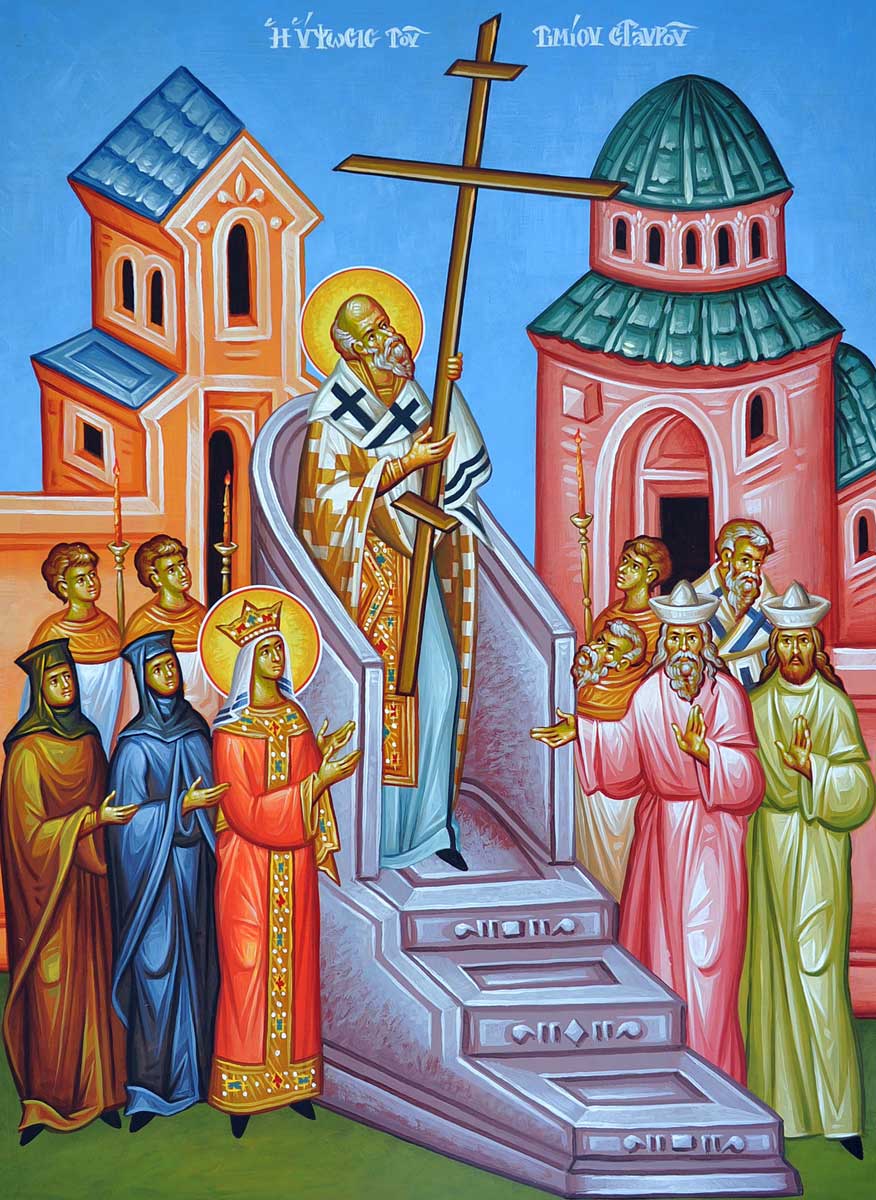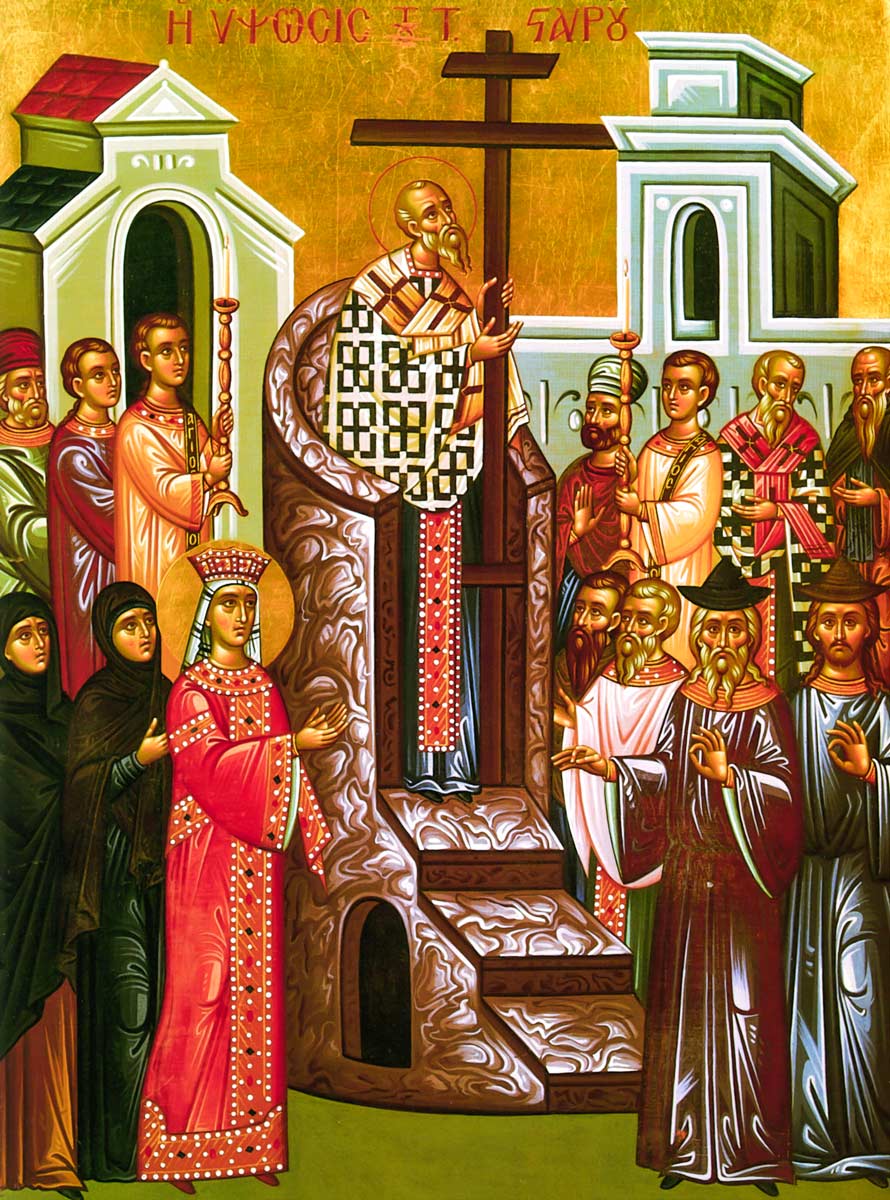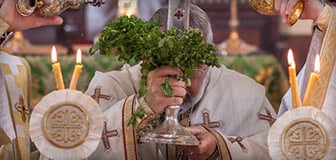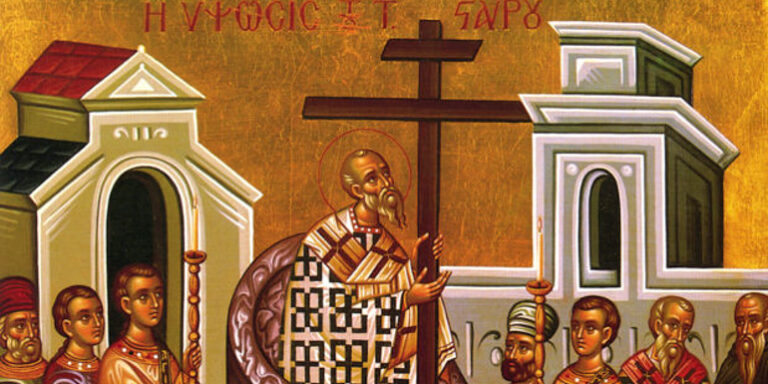
The Feast of the Universal Exaltation of the Precious and Life-Giving Cross is celebrated each year on September 14. The Feast commemorates the finding of the True Cross of our Lord and Savior Jesus Christ by Saint Helen, the mother of the Emperor Constantine.
Background
In the twentieth year of his reign (326), the Emperor Constantine sent his mother Saint Helen to Jerusalem to venerate the holy places and to find the site of the Holy Sepulchre and of the Cross. Relying upon the oral tradition of the faithful, Saint Helen found the precious Cross together with the crosses of the two thieves crucified with our Lord. However, Helen had no way of determining which was the Cross of Christ.
With the healing of a dying woman who touched one of the crosses, Patriarch Macarius of Jerusalem identified the True Cross of Christ. Saint Helen and her court venerated the Precious and Life-Giving Cross along with many others who came to see this great instrument of Redemption.
The Patriarch mounted the ambo (pulpit) and lifted the Cross with both hands so that all of the people gathered could see it. The crowd responded with “Lord have mercy”.
This became the occasion of the institution in all of the Churches of the Exaltation of the Precious Cross, not only in memory of the event of the finding of the Cross, but also to celebrate how an instrument of shame was used to overcome death and bring salvation and eternal life.
The Feast is an opportunity outside of the observances of Holy Week to celebrate the full significance of the victory of the Cross over the powers of the world, and the triumph of the wisdom of God through the Cross over the wisdom of this world. This Feast also gives the Church an opportunity to relish the full glory of the Cross as a source of light, hope and victory for Christ’s people. It is also a time to celebrate the universality of the work of redemption accomplished through the Cross: the entire universe is seen through the light of the Cross, the new Tree of Life which provides nourishment for those who have been redeemed in Christ.
Icon of the Feast

The icon of the Feast of the Precious Cross tells the story of the finding of the Cross and of its Exaltation. Patriarch Macarius is standing in the pulpit elevating the Cross for all to see and venerate. On each side of the Patriarch are deacons holding candles. The elevated Cross is surrounded and venerated by many clergy and lay people, including Saint Helen, the mother of Emperor Constantine.
In the background of the icon is a domed structure that represents the Church of the Resurrection in Jerusalem. This church was one of the churches constructed and dedicated by Emperor Constantine on the holy sites of Jerusalem.
Orthodox Christian Celebration of the Feast of the Universal Exaltation of the Precious and Life-Giving Cross

This Feast of our Lord is celebrated with the Divine Liturgy of Saint John Chrysostom, which is conducted on the day of the feast and preceded by the Matins service. A Great Vespers is conducted on the evening before the day of the feast.
On the day of the Feast at the conclusion of the Matins or of the Divine Liturgy, a special service is held. The Cross is placed on a tray surrounded by branches of basil and is taken in solemn procession through the church to the chanting of the Hymn of the Feast.
The tray is placed on a table, and the priest takes the Cross and offers petitions from each side of the table, the four directions of the compass. This represents the universal nature of the offering of Christ upon the Cross. As the people respond by chanting “Lord have mercy”, the priest raises and lowers the cross, a commemoration of its finding and exaltation.
At the conclusion of the service, the people come and venerate the cross and receive the basil from the priest. The basil is used and offered, as it was the fragrant flower growing where the Cross was found.
Source: GOARCH
To regenerate means to restore or renew something to its original state or condition. This can refer to physical regeneration, such as the regrowth of tissue or cells in living organisms, or to the rejuvenation or reinvigoration of something that has become worn out or depleted. In a broader sense, regeneration can also refer to the revival or renewal of a system, organization, or community.
Source link

